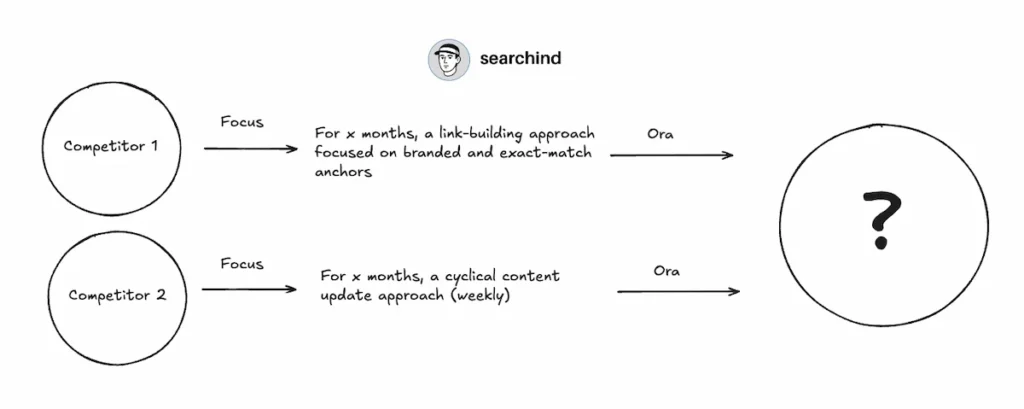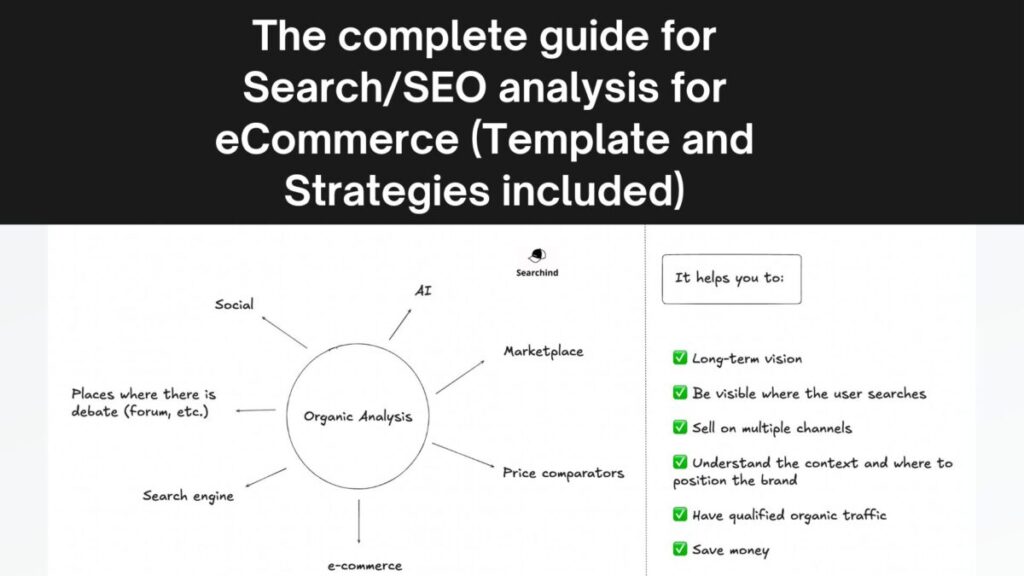Think of SEO as a battlefield where terrain, weather conditions, and troop positions are constantly shifting.
Traditional tools only give you a static snapshot, while what you need is to understand movements, intentions, and the strengths and weaknesses of your opponents.
It’s often assumed that keyword research gives you a full view of the playing field, but that’s not correct.
Before anything else, you need to evaluate several aspects:
→ Map the invisible territory
Don’t limit yourself to the keywords suggested by tools.
Create a semantic map of your industry, identifying not only keywords but entire semantic territories that competitors are either occupying or leaving uncovered.
Who controls specific topic clusters? What thematic connections are no one taking advantage of?
→ Study strategies, not just tactics

Analyze how competitors have evolved over time.
How have they changed their approach? Which new territories are they trying to conquer? Which ones have they abandoned?
Behind these movements lies a strategic mindset you should aim to decipher.
→ Identify high‑value “battlefields”
Not all SEO territories have the same value.
Some are fertile and full of opportunities, while others are barren and unproductive.
The art lies in identifying which battlefields deserve your resources and which should either be avoided or only approached after consolidating other positions.
→ Understand the invisible alliances
Just like in war, alliances exist here too.
Linking patterns between websites, reciprocal mentions, and complementary editorial strategies reveal ecosystems of collaboration that can be more powerful than individual competitors.
Mapping these “alliances” allows you to understand the real forces at play.
→ Analyze structural vulnerabilities
Every competitor has weaknesses.
Unmonitored territories, recurring technical issues, or qualitative gaps in specific topic areas.
A true strategic analysis identifies these vulnerabilities and turns them into opportunities.
It will help you adopt a different approach.
Maybe one of your competitors is moving slowly, or they’re neglecting the technical side or the cyclical updating of content.
You could try adopting an aggressive approach in that area for a few months to see if you gain results.
Of course, costs and available resources need to be carefully evaluated.
Once, I looked at a competitor’s LinkedIn profile and noticed they had a strong, well‑structured team for the technical side.
So, I didn’t focus on competing in that area; I chose to play on other battlefields instead.
That’s just one example.
Don’t fall into the trap of simply replicating what works for others.
Use your deep understanding of the competitive landscape to discover unique paths, unexplored territories, and approaches no competitor has yet considered.
Begin with a profound, almost meditative, understanding of the battlefield in all its dimensions.
Many businesses online fail because they don’t have a tailored strategy.
Act now to not losing money.
Do you need an SEO strategy?
Book a call 👇



